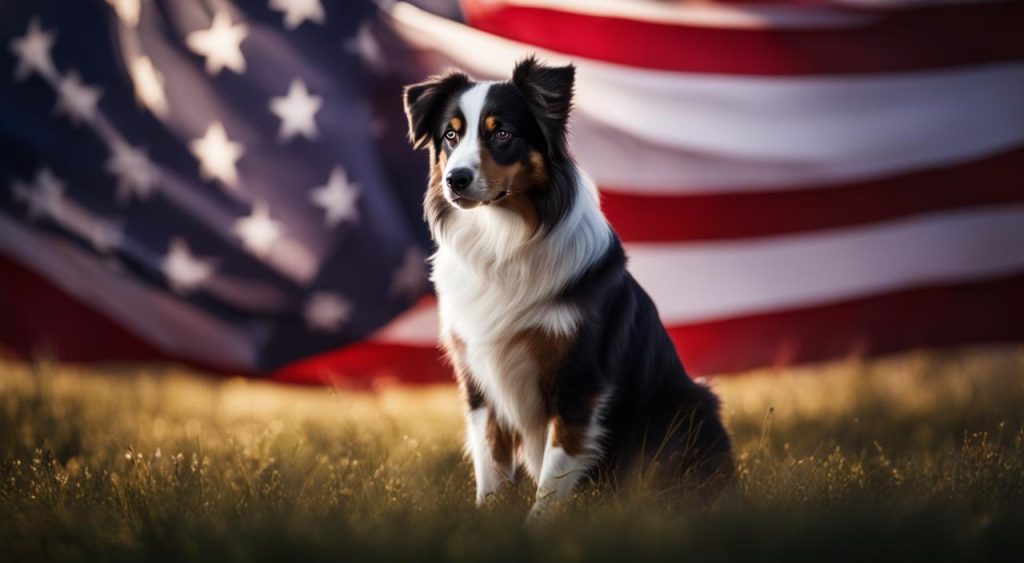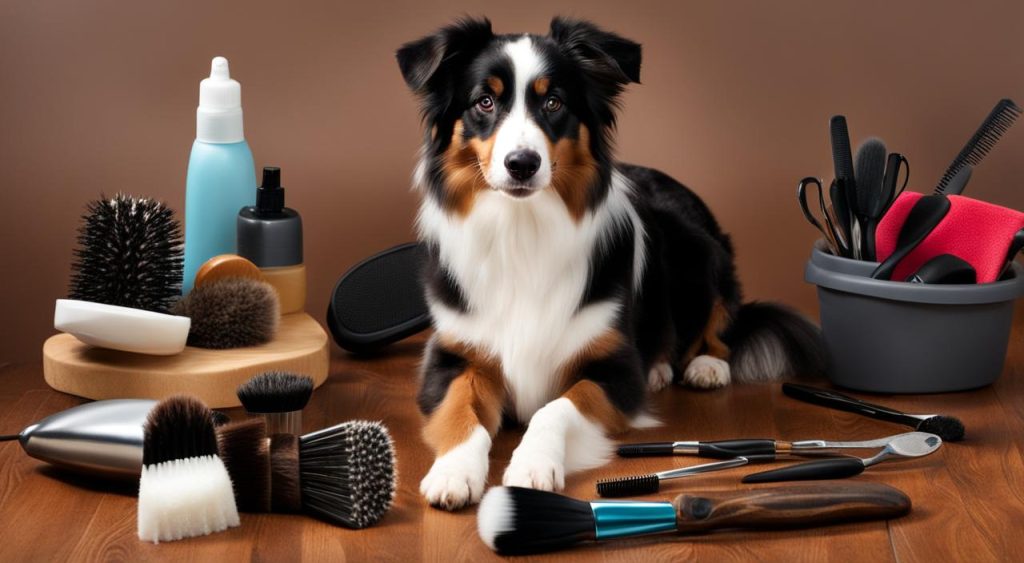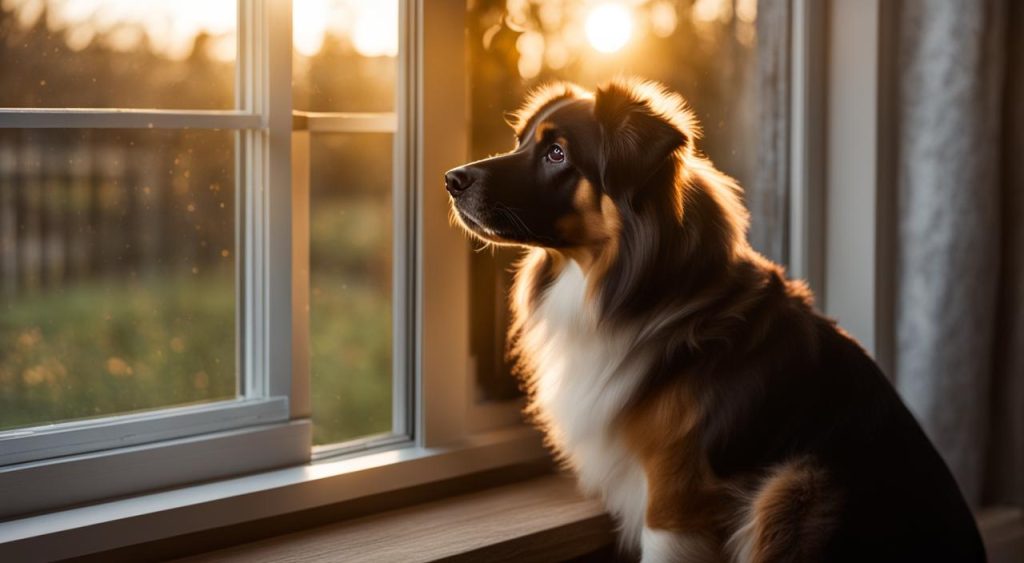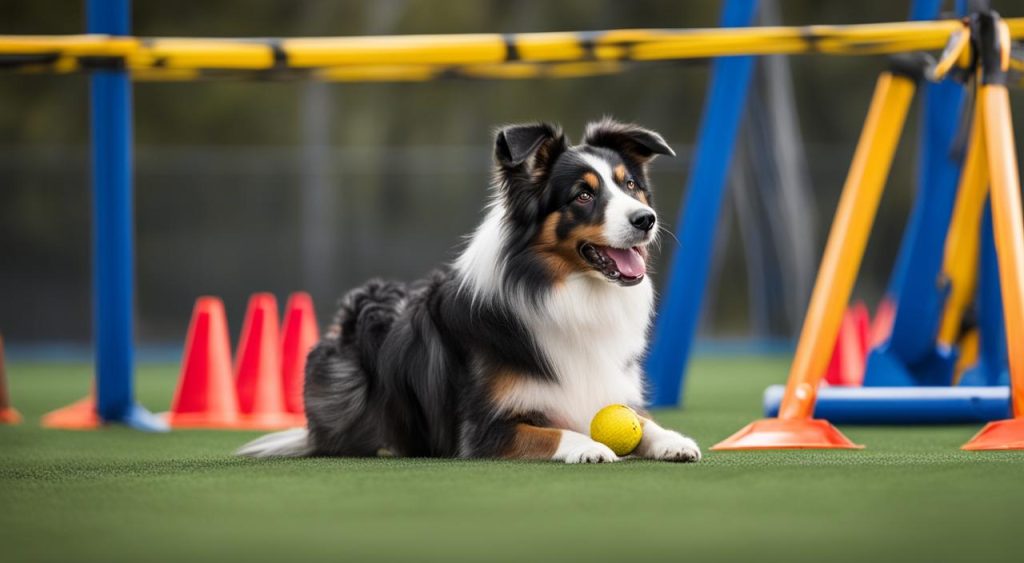If you’re a dog lover, chances are you’ve heard of Mini Aussies and Mini American Shepherds. But have you ever wondered why they have two different names? In this article, we’ll explore the breed explanation and origins of these adorable dogs to help clear up any confusion.
The history of the Australian Shepherd breed is not as straightforward as you might think. Officially recognized in 1957, the Australian Shepherd’s current breed description wasn’t written until 1977. The breed wasn’t recognized by the American Kennel Club (AKC) until 1993. However, the story of the Australian Shepherd involves shepherds from various countries and the development of the Miniature Australian Shepherd.
The Miniature Australian Shepherd was created in the late 1960s by breeding Australian Shepherds to create a smaller version of the breed. They quickly became a popular choice for dog owners due to their smaller size and charming personalities. However, to avoid confusion with the AKC-recognized Australian Shepherd breed, the Miniature Australian Shepherd was later renamed “Miniature American Shepherd.”
Key Takeaways:
- Mini Aussies are also known as Mini American Shepherds.
- The Miniature Australian Shepherd was developed from Australian Shepherds to create a smaller version of the breed.
- They were renamed “Miniature American Shepherd” to avoid confusion with the AKC-recognized Australian Shepherd breed.
- The breed’s history and origins are intertwined with the Australian Shepherd breed.
- Mini Aussies are popular for their smaller size and charming personalities.
The History of Australian Shepherds
The history of Australian Shepherds dates back to the late 1800s during the land rushes in North America. Shepherds from various countries, including Great Britain, Scotland, Spain, Australia, and Latin America, brought their favorite herding dogs to assist in managing the influx of sheep.
The ancestors of Australian Shepherds are believed to originate from the Basque Region of the Pyrenees Mountains in Spain or from Germany. However, the breed’s name is somewhat of a misnomer as it is not recognized as a native breed in Australia.
The Australian Shepherd breed itself wasn’t officially recognized until 1957 with the formation of the Australian Shepherd Club of America, establishing the breed registry.
In 1977, the breed standard for Australian Shepherds was established, providing a clear description of the ideal characteristics and physical attributes for the breed.
It wasn’t until 1993 that the Australian Shepherd breed received recognition from the American Kennel Club (AKC), solidifying its place among the recognized dog breeds in the United States.
The Australian Shepherd was selectively bred for its exceptional working abilities, which is what the breed is primarily known for.
The Development of Miniature Australian Shepherds
Miniature Australian Shepherds, also known as Mini Aussies, were specifically bred from Australian Shepherds to create a smaller version of the breed. The development of Miniature Australian Shepherds began in the late 1960s, when a breeder named Doris Cordova embarked on a mission to establish a miniature size variation of the Australian Shepherd. Cordova, along with other breeders, aimed to preserve the characteristics and working abilities of the Australian Shepherd in a compact package.
Doris Cordova played a significant role in the early breeding program of Miniature Australian Shepherds, particularly with her renowned Cordova kennel. One of the notable dogs that emerged from her breeding program was “Cordova Spike.” This dog’s exceptional traits and lineage contributed to shaping the breed.
Another influential figure in the development of Mini Aussies was breeder Chas Lasater. His involvement further enhanced the breed’s qualities and ensured the continuation of its genetic diversity.
To consolidate their efforts and establish a cohesive community, the Miniature Australian Shepherd Club of the USA (MASCUSA) was formed in 1990. This club aimed to promote and preserve the breed’s excellence and advocated for the Mini Aussie’s unique characteristics.
The breed’s recognition and acceptance were further solidified when the American Rare Breeds Association (ARBA) officially acknowledged Miniature Australian Shepherds. However, to avoid confusion with the Australian Shepherd breed recognized by the American Kennel Club (AKC), the breed was eventually renamed as the Miniature American Shepherd.
Today, Miniature Australian Shepherds continue to captivate dog lovers worldwide with their intelligence, agility, and compact size. Their history stands as a testament to the passion and dedication of breeders such as Doris Cordova and Chas Lasater in creating a remarkable breed that truly embodies the spirit of the Australian Shepherd.
Attributes of Miniature Australian Shepherds
Miniature Australian Shepherds are known for their unique attributes that make them popular among dog owners. From their shedding patterns to their intelligence and exercise needs, Mini Aussies offer a fantastic blend of qualities.
Shedding
One notable attribute of Miniature Australian Shepherds is their thick, weather-resistant double coat. While their coat helps protect them from various weather conditions, they do shed their undercoat twice a year. Regular brushing can help minimize shedding and keep their coat healthy.
Intelligence
When it comes to intelligence, Mini Aussies are highly ranked. They are quick learners and are relatively easy to train. Their intelligence allows them to pick up commands and tasks quickly, making them a joy to train and work with.
Exercise Needs
Miniature Australian Shepherds are active dogs that require a moderate amount of exercise to keep them physically and mentally stimulated. They thrive in active homes where they can engage in activities like walking, running, and hiking. A minimum of one hour of exercise per day is recommended to meet their exercise needs.
Family Dogs
Mini Aussies are renowned for their compatibility with families. They have a natural affinity for children and are often patient and gentle with them. Their loyal and affectionate nature makes them excellent family companions and great with kids.
When considering a Miniature Australian Shepherd as a pet, it’s important to evaluate your lifestyle and determine whether you can meet their exercise needs and provide the necessary time and financial commitment. With their shedding, intelligence, exercise needs, and suitability as family dogs, Miniature Australian Shepherds can make a wonderful addition to the right family.
Training and Socialization of Miniature Australian Shepherds
Miniature Australian Shepherds are highly intelligent dogs that are relatively easy to train. Consistency, patience, and positive reinforcement are key components of their training sessions. It is important to start their training as soon as you bring them home and continue it throughout their life.
Socialization is also crucial for Mini Aussies, and it should begin at a young age. Exposing them to different people, animals, and environments will help them develop into well-rounded and confident dogs. It is important to ensure that your Mini Aussie has received the necessary vaccinations before introducing them to other dogs.
“Proper training and socialization are essential for Miniature Australian Shepherds to become well-behaved and obedient companions.”
Here are some training tips for Miniature Australian Shepherds:
1. Start with basic obedience:
Teach your Mini Aussie basic commands such as sit, stay, come, and down. Use positive reinforcement techniques, such as treats and praise, to reward them for good behavior.
2. Be consistent:
Use the same commands and hand signals consistently to avoid confusion. Make sure all family members are on the same page when it comes to training your Mini Aussie.
3. Use positive reinforcement:
Reward your Mini Aussie with treats, praise, and affection when they exhibit good behavior. Positive reinforcement will motivate them to repeat the desired actions.
4. Incorporate mental stimulation:
Miniature Australian Shepherds are highly intelligent and need mental stimulation to stay engaged. Use puzzle toys, interactive games, and training sessions to challenge their minds.
5. Enroll in obedience classes:
Consider enrolling your Mini Aussie in obedience classes where they can learn from experienced trainers and socialize with other dogs. These classes can help reinforce their training and improve their social skills.
Remember, every dog is unique, and training techniques may need to be adapted to your Mini Aussie’s personality and learning style. Patience, consistency, and positive reinforcement will help you build a strong bond with your Miniature Australian Shepherd and shape them into a well-behaved and obedient companion.
Grooming and Care for Miniature Australian Shepherds
Proper grooming and care are essential for keeping your Miniature Australian Shepherd healthy and happy. Here are some important tips to consider:
Brushing and Shedding
Regular brushing is crucial for maintaining the health of your Mini Aussie’s coat and minimizing shedding. Aim to brush your dog at least once a week to remove loose hair and prevent matting. This will also help distribute natural oils and keep their coat shiny.
Dental Hygiene
Just like humans, dogs require dental care to maintain optimal oral health. Brush your Mini Aussie’s teeth on a weekly basis using a dog-specific toothbrush and toothpaste. This will help prevent gum disease, tooth decay, and bad breath.
Ear Cleaning
Regular ear cleaning is important to prevent ear infections and maintain good ear health in Miniature Australian Shepherds. Use a dog-friendly ear cleaning solution and gently wipe the inside of their ears with a cotton ball or a soft cloth. Avoid using cotton swabs, as they can push debris further into the ear canal.
Nail Trimming
Trimming your Mini Aussie’s nails is crucial for their comfort and overall wellbeing. Long nails can cause discomfort and potentially lead to joint issues. Trim their nails approximately once a month, taking care not to cut into the quick (the blood vessel inside the nail).
Bathing
Miniature Australian Shepherds do not require frequent baths unless they get particularly dirty or smelly. Aim to bathe them every 2-3 months or as needed. Use a dog-specific shampoo and thoroughly rinse their coat to remove any residue.
Proper Nutrition, Exercise, and Quality Time
In addition to grooming, Mini Aussies require a well-balanced diet, regular exercise, and quality time spent with their owners. Provide them with a high-quality dog food that meets their nutritional needs. Engage in daily physical activity, such as walks or playtime, to keep them mentally and physically stimulated. Lastly, spend quality time bonding with your Mini Aussie through training and socialization activities.
By following these grooming and care tips, you can ensure that your Miniature Australian Shepherd remains healthy, happy, and well-groomed.
Common Health Issues of Miniature Australian Shepherds
While Miniature Australian Shepherds are generally healthy dogs, it’s important to be aware of the common health problems they may experience.
Gastrointestinal issues, such as diarrhea and vomiting, can occur in Mini Aussies. These issues may be caused by dietary indiscretion, food allergies, or other factors. Keeping a close eye on their diet and providing a balanced, appropriate meal plan is crucial to support their digestive health.
Eye issues are another concern for Miniature Australian Shepherds. They may be prone to genetic conditions such as progressive retinal atrophy or cataracts. Regular eye examinations by a veterinarian can help detect and address any potential problems early on.
Behavioral conditions can also affect Mini Aussies. They may be prone to separation anxiety, noise phobias, or other behavioral issues. Proper socialization, positive reinforcement training, and providing a stimulating environment can help minimize these problems and promote their overall well-being.
Regular veterinary check-ups and preventive care are key in maintaining the health and well-being of your Mini Aussie. Routine vaccinations, parasite prevention, dental care, and regular exercise are all important aspects of their healthcare regimen.
Consider obtaining pet insurance to help cover unexpected veterinary expenses. This can give you peace of mind knowing that you have financial support in case of any health issues that may arise.
Conclusion
Mini Aussies, also known as Mini American Shepherds, have a fascinating breed history that is closely linked to the Australian Shepherd breed. These dogs were specifically bred from Australian Shepherds to create a smaller version of the breed. Miniature Australian Shepherds possess unique attributes, including shedding, intelligence, exercise needs, and their suitability as family dogs.
When it comes to owning a Mini Aussie, training, socialization, grooming, and proper care play crucial roles in their overall health and happiness. These dogs are highly intelligent and relatively easy to train, but consistency, patience, and positive reinforcement are key. Socialization from a young age is also important to ensure they develop into well-rounded dogs.
In terms of grooming, Miniature Australian Shepherds have a thick double coat that requires regular brushing to minimize shedding. Dental hygiene, ear cleaning, nail trimming, and occasional baths are also necessary to maintain their overall health. Additionally, providing proper nutrition, exercise, and quality time is essential for the care and well-being of Mini Aussies.
Before adopting a Mini Aussie, it’s crucial for potential owners to carefully consider their lifestyle, time commitment, and financial responsibility. Miniature Australian Shepherds can be wonderful companions, but they require dedicated care and attention. By understanding the breed history and taking these ownership considerations into account, you can ensure a happy and fulfilling relationship with your Mini Aussie.





